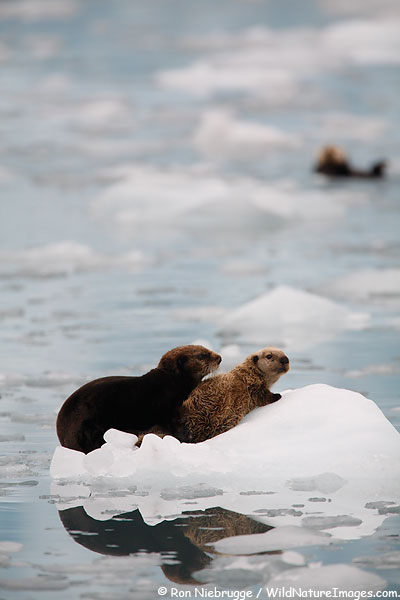

 ::
Sea Otter Habitat
::
Sea Otter Habitat
Sea Otters have very distinct habitats. The sea otters usually live near the shore waters of the North Pacific, from Japan, north to the coast of the Kamchatka Peninsula, then from Alaska down along the Pacific coast of North America to Baja, California. Many sea otters live near rocky sea bottoms and shorelines, where marine communities are extremely diverse. They also may live where mud and sand are the primary sea-bottom substrates. Sea Otters favor confined areas, such as bays and inlets. They stay in areas where the water is less than 130 feet deep, but travel through much deeper water. Sea Otters do not live in deeper waters because then it is a longer dive for them to catch their food.
Sea Otters hang in groups called rafts; they usually hang out by waters near shore or kelp beds and where shellfish are plentiful. (See also Adaptation). They use kelp beds to wrap themselves or tie themselves up in and to find food. Mothers tend to leave their pups in the kelp beds while they are out hunting and searching for food. Sea Otters sporadically go onto shore to rest and sometimes in the winter go on sandy, cobble, snow covered beaches, small icebergs or when population density is high.
Sea Otters do not migrate due to their coat of fur. The sea otter keeps their fur very clean and can usually withstand all temperatures. If sea otters migrate , it is due to the abundance of food in an area and kelp. Sea Otters eat, sleep, mate, and even give birth in the water.
A female sea otter and her pup on an iceberg in the winter.
Sea Otters are extremely social, and have a tendency to congregate in groups of gender such as: the pups and females in a group and males in another group. The only time the male and females are together is during mating. (See also Reproduction). Sea Otters that live in rocky bottom habitats interact with organisms such as lobsters, sea urchins, and abalone. In soft-bottom habitats, the sea otter interact with smaller animals such as Pismo clams, crabs, and snails. (See also Interactions).



 :: Sea Otter
:: Sea Otter


